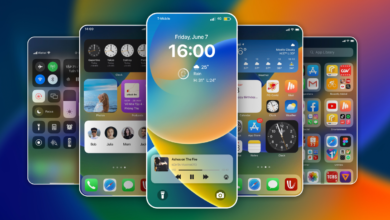
If your Android device has been lagging, freezing, or running slower than usual, you’re not alone. Over time, smartphones accumulate unnecessary files, outdated apps, and background processes that can significantly reduce performance. Whether you’re using a flagship Samsung Galaxy, a Google Pixel, or a budget Motorola device, these slowdowns can be frustrating. Fortunately, there are proven ways to speed up your Android device and restore its responsiveness without needing expensive upgrades. This comprehensive guide will walk you through step-by-step optimizations from clearing cache to disabling bloatware to help your phone run like new again.
By following these expert-recommended tips, you’ll not only speed up your Android device but also extend its lifespan. Many of these methods require no technical expertise, and some can be done in just a few minutes. Whether you’re dealing with an older phone struggling with modern apps or a newer device that’s inexplicably sluggish, this guide covers all the essential fixes. Let’s dive into the best strategies to optimize your Android experience. If you’re running an old version of Android or haven’t updated your apps in a while, your phone may not be optimized for Speed Up .
How to Speed Up Your Android Device
Android Devices Slow Down Over Time
Understanding why your Android device slows down is the first step toward fixing it. One of the biggest culprits is storage bloat. As you use your phone, apps store temporary files (cache), and over time, these files accumulate, eating up valuable storage space. When your device’s storage is nearly full, it struggles to manage data efficiently, leading to laggy performance. Another major factor is outdated software. Android manufacturers release periodic updates to improve performance, fix bugs, and patch security vulnerabilities.
Bloatware pre-installed apps
Bloatware pre-installed apps from carriers or manufacturers also contributes to slowdowns. Many of these apps cannot be uninstalled, and they run unnecessary services in the background. Finally, fragmented storage especially on older devices can slow down read/write Speed Up , making your phone feel sluggish when opening apps or loading files. Additionally, background processes from apps like Facebook, Instagram, and messaging services constantly run, consuming RAM and battery life even when you’re not actively using them.
Free Up Storage Space
One of the quickest ways to speed up your Android device is by clearing out unnecessary files. Start by checking your storage usage under Settings > Storage. Here, you’ll see a breakdown of what’s taking up space apps, photos, videos, and cached data. One of the simplest ways to speed up your Android device is by clearing cached data. Cache files help apps load faster but can become bloated over time. To clear the cache, go to Settings > Storage > Cached Data and tap to clear it.
Use Google Files or SD Maid for Deep Cleaning
Third-party tools like Google Files (by Google) or SD Maid can help identify duplicate files, residual data, and junk that the system misses. These apps often recover gigabytes of wasted space. For a more thorough cleanup, use apps like Google Files or SD Maid to remove residual files and duplicates. Similarly, keep your apps updated via the Google Play Store. Developers frequently release patches to improve efficiency and reduce resource consumption.
Update Your Android OS and Apps
Running outdated software is a common cause of slowdowns. Manufacturers like Samsung, Google, and OnePlus release updates to improve performance and security. Enabling automatic updates ensures you always have the latest optimizations. Similarly, keep your apps updated via the Google Play Store. Developers frequently release patches to improve efficiency and reduce resource consumption. Enabling automatic updates ensures you always have the latest optimizations.
Optimize Background Processes and RAM Usage
Adjusting a few system settings can significantly speed up your Android device. Start by reducing animations: enable Developer Options (tap Build Number in Settings > About Phone seven times), then set Window Animation Scale, Transition Animation Scale, and Animator Duration Scale to 0.5x or disable them entirely. Additionally, switch to a lighter launcher if your device feels sluggish. Some third-party launchers, like Nova Launcher, offer better performance than stock options. Disabling live wallpapers and widgets.
Disable or Remove Bloatware
Many Android phones in the USA come with pre-installed carrier or manufacturer apps that can’t be uninstalled normally. While you may not be able to remove them completely, you can disable them to prevent them from running. Adjusting a few system settings can significantly speed up your Android device. Start by reducing animations: enable Developer Options tap Build Number in Settings > About Phone seven times, then set Window Animation Scale, Transition Animation Scale, and Animator Duration Scale to 0.5x or disable.
Improve Performance with a Custom Launcher
Stock launchers (like Samsung’s One UI or Xiaomi’s MIUI) can sometimes be heavy. Switching to a lightweight third-party launcher like Nova Launcher or Lawnchair can make your device feel snappier. Additionally, switch to a lighter launcher if your device feels sluggish. Some third-party launchers, like Nova Launcher, offer better performance than stock options. Disabling live wallpapers and widgets can also free up system resources.
Factory Reset Last Resort
If your device remains slow after trying all optimizations, a factory reset may be necessary. This erases all data and restores the phone to its original state. Before proceeding, back up important files via Google Drive or an external storage device. To reset, go to Settings > System > Reset Options > Erase All Data. A factory reset removes all bloatware, residual files, and misconfigured settings, often resulting in a noticeable Speed Up boost. However, it should only be done as a last resort.
Read More: Hidden Costs in Android Application Development and How to Avoid Them
Conclusion
A slow Android device doesn’t have to mean buying a new phone. By following these steps clearing storage, optimizing background apps, updating software, and disabling bloatware you can speed up your Android device significantly. Many of these fixes take just minutes but deliver noticeable improvements in speed and responsiveness. Regular maintenance, such as uninstalling unused apps and keeping software updated, ensures long-term efficiency. Take action today and give your Android device the Speed Up boost it deserves.
Regular maintenance is key to keeping your phone running smoothly long-term. Whether you’re using a budget device or a high-end flagship, these optimizations will help extend its lifespan and improve performance. Try them today and enjoy a faster, more efficient Android experience. By following this guide, you can enjoy faster app launches, smoother multitasking, and improved battery life. Whether you own a budget phone or a premium flagship, these tips will help maximize performance.
FAQs
How often should I clear my Android cache?
Clearing cache every few weeks helps, but don’t overdo it apps rebuild cache for faster loading.
Will disabling bloatware cause problems?
No, disabling unused pre-installed apps is safe and frees up resources, but avoid doing it too frequently as apps rebuild cache for faster loading.
Does a factory reset remove viruses?
Yes, a factory reset wipes everything, including malware, but reinstall apps carefully afterward.
Can a microSD card slow down my phone?
A slow or failing SD card can cause lag use a high-Speed Up card (UHS-I or better).
Why is my phone slow after an update?
Some updates need time to optimize; if issues persist, try clearing cache or a factory reset.











